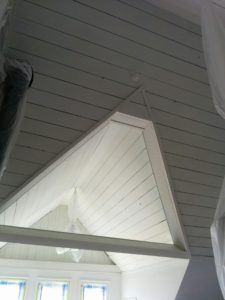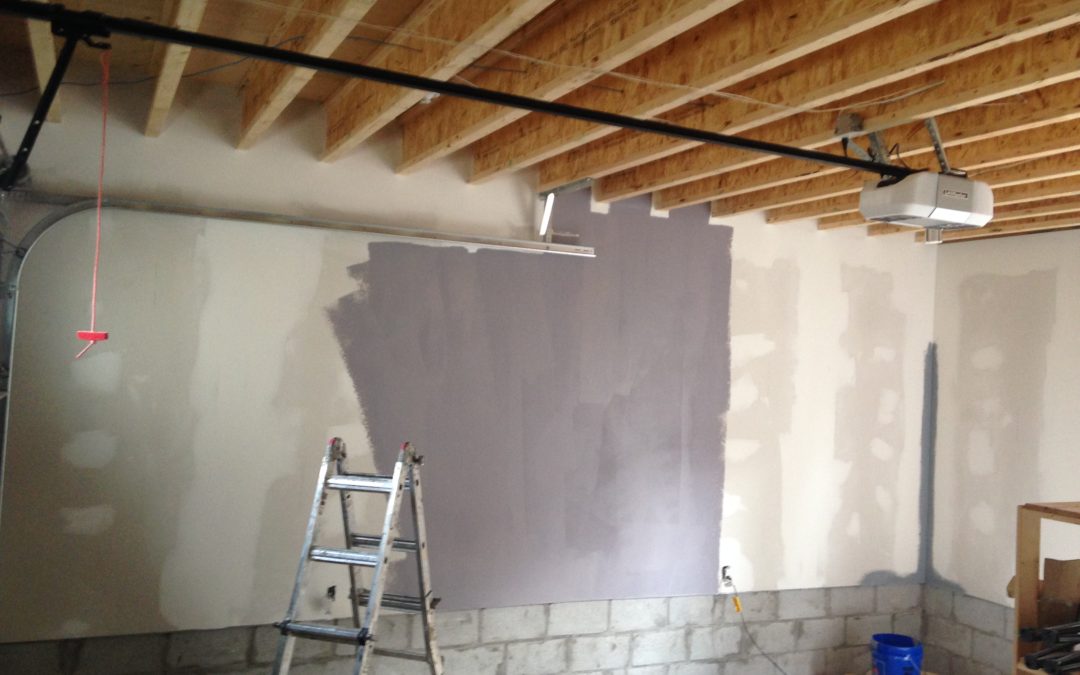Many paints advertise “paint and primer in one” and this can potentially be a time saver. However, there are certain situations when priming will greatly help a paint job, either in terms of efficiency or durability and sometimes both.
Here is our definitive list of when to prime!
Primer is recommended for drastic colour changes
Certain primers are designed to have higher coverage than paint. Therefore, these primers are handy in a few different situations:
- When going from a dark colour to a light colour. A white primer can hide the dark colour better than the finish coat can. We recommend 1 coat of primer for most deep colours, and in some instances we’d recommend a 2nd coat for very dark colours. After the surface is primed you can usually get the finish coat to cover in 2 coats
- When going from a light colour to a dark colour. The primer can be tinted close to the finish coat colour. Usually 1 coat of primer will suffice, and then 2 coats of the finish paint and you’re done!
- When using an especially vibrant colour. Many bright reds, yellows, greens and blues can have coverage issues. To ensure good coverage a grey primer is recommended. A reputable paint store will be able to recommend the specific depth of grey that’s needed.
Helpful tip: If a paint store recommends a lighter version of a vibrant colour as a primer, don’t listen to them! A grey primer is essential under any vibrant finish coat!
Our recommendation for this application is Sherwin Williams Multi-Purpose Water-Based Acrylic-Alkyd Primer. This particular primer has great coverage so it’s perfect as an undercoat for colour changes.
 Primer is recommended when adhesion might be an issue
Primer is recommended when adhesion might be an issue
Paint has trouble adhering to certain surfaces, these include:
- Glossy surfaces
- Bare drywall patch
- Bare metal
- Bare wood
Glossy surfaces can be either sanded to de-gloss, primed, or both sanded and primed. Sanding breaks open the surface and allows the paint to penetrate deeper and get a better bond with the surface.
Bare surfaces, such as bare patches, bare wood or metal should be primed as well. Priming acts as an intermediary step, it bonds to the surface and then gives a porous surface for the finish coat to bond to.
 Priming is recommended where there are potential problems with stain bleeding
Priming is recommended where there are potential problems with stain bleeding
These areas include the following:
- Mould-prone areas such as bathrooms
- Wood where sap from knots are staining the surface
- Greasy areas such as kitchens
First off, what is stain bleeding? Paint has trouble covering certain substances, such as grease, sap and mould. Consequently when these are painted over, the stain discolours the paint and “bleeds” through the surface.
Greasy and stained areas should be washed first with TSP to clean the grease off the surface. However, even after cleaning there can still be a little bit of residue remaining, especially if there’s extensive staining. To completely eliminate the potential of the stain bleeding through one can use an alcohol-based primer.
Finally
If you’d prefer CAM Painters to take care of your painting needs why don’t you book a quote? We’d love to Transform your home with lasting beauty!

